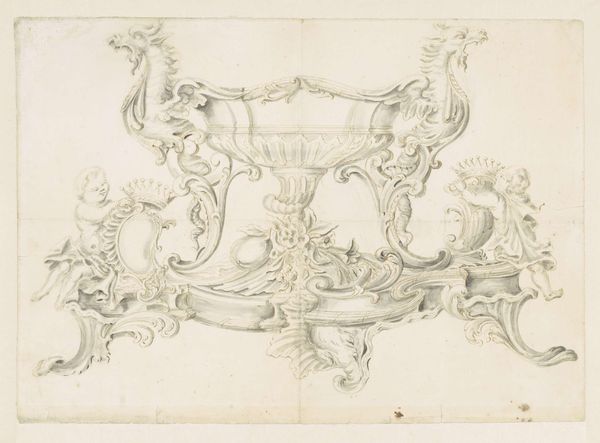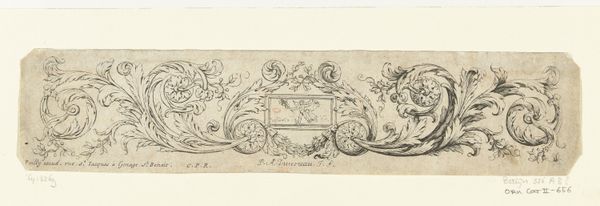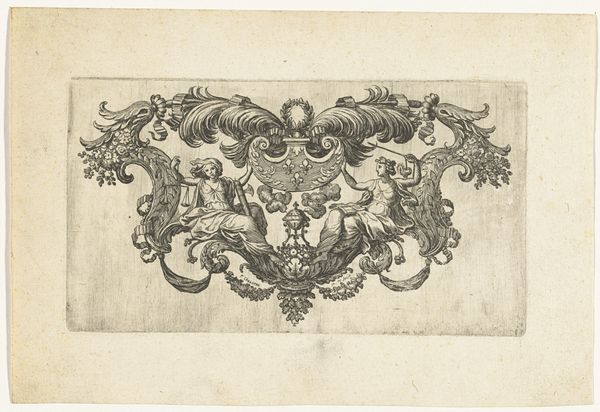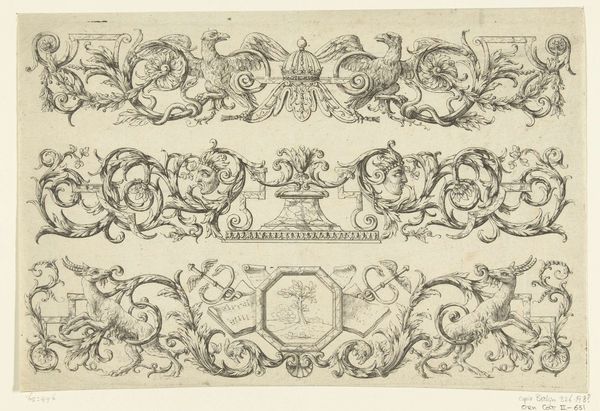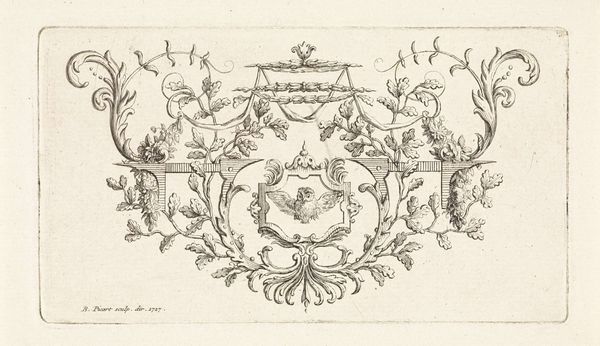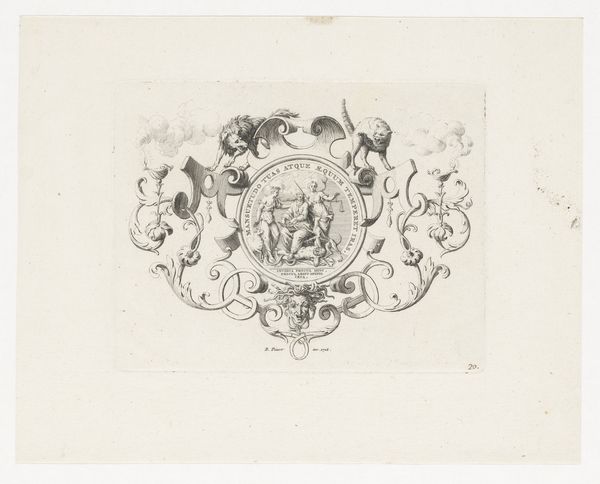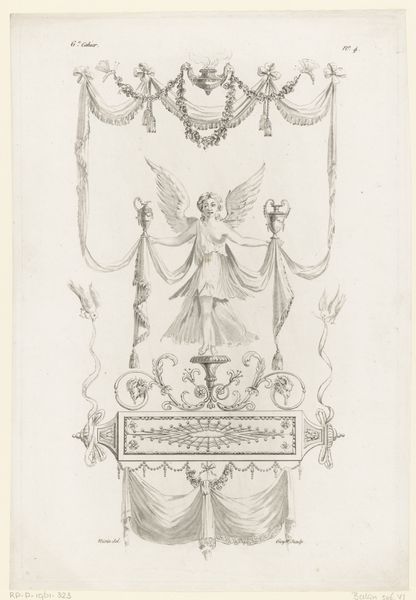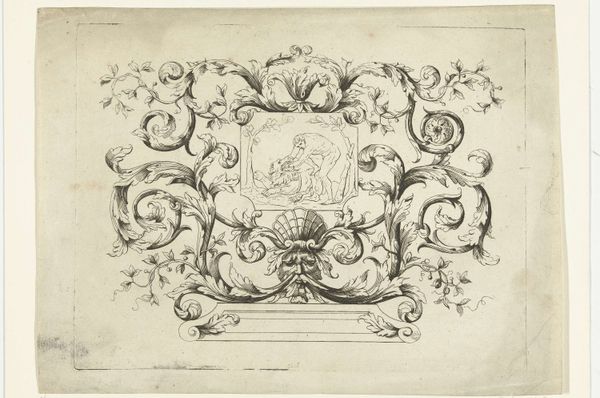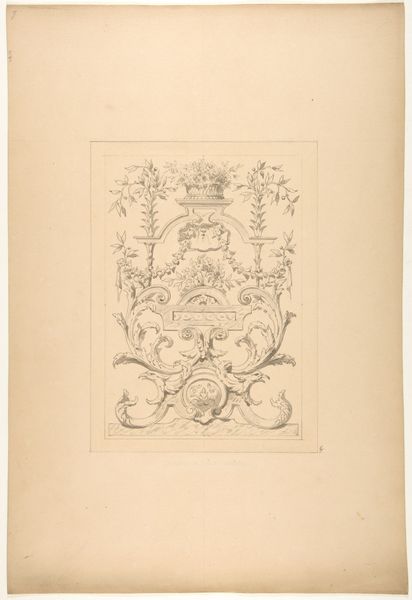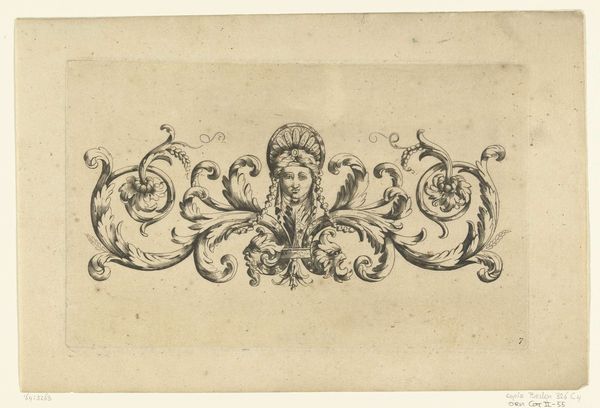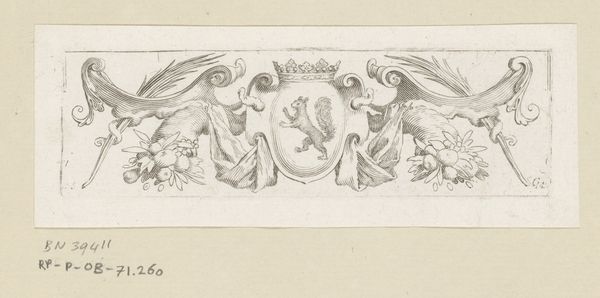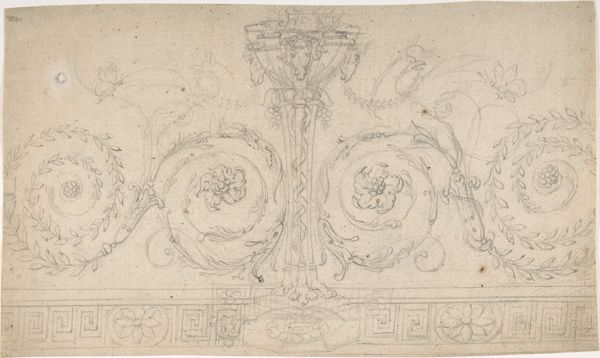
drawing, ink
#
drawing
#
baroque
#
pen drawing
#
pen illustration
#
pen sketch
#
personal sketchbook
#
ink
#
ink drawing experimentation
#
pen-ink sketch
#
line
#
pen work
#
sketchbook drawing
#
decorative-art
#
sketchbook art
#
initial sketch
Dimensions: height 61 mm, width 265 mm
Copyright: Rijks Museum: Open Domain
Editor: This is "Twee bladranken met rozetten" by Paul Androuet Ducerceau, created around 1670 to 1693. It's an ink drawing, quite intricate, with swirling leaves and what look like heraldic symbols. It reminds me of something you'd see on fancy wallpaper or engraved on silverware. What strikes you most about it? Curator: For me, the beauty of this drawing lies in understanding its material purpose. It’s not "fine art" in the traditional sense but a design, a blueprint. Ducerceau's labour is evident in each stroke. What kind of work might this have been a design for? Was this drawing meant to instruct skilled artisans who worked with metal, plaster, or even textiles? The Baroque era thrived on ornamentation, a demand that fueled the work of draftsmen like Ducerceau, acting as a link between artistic vision and material production. Editor: So, it’s less about the "art" and more about the production of fancy things. I never thought about the labor behind ornamentation. It’s easy to overlook the human effort when you see it on a grand building. Curator: Precisely! This piece offers a peek behind the curtain, highlighting the industry surrounding luxury. How would variations in ink quality, the sharpness of the quill, or even the type of paper affect the final output by artisans replicating it? Think of it in terms of craft and mass production during that time. The rise of consumer culture meant a constant demand for new patterns. Editor: That’s a perspective shift. Now, I’m considering what kinds of workshops might have used this design, and the role Ducerceau played in feeding the Baroque appetite for ornamentation. Curator: And how his skill as a draftsman shaped the possibilities and limitations of artisans working with those materials. It really emphasizes that the design dictated the capabilities of artisans. Editor: Exactly, thanks. This gives the piece a new dimension. I now see this less as a pretty drawing, and more as a record of a 17th-century design industry, with its own means of production.
Comments
No comments
Be the first to comment and join the conversation on the ultimate creative platform.
